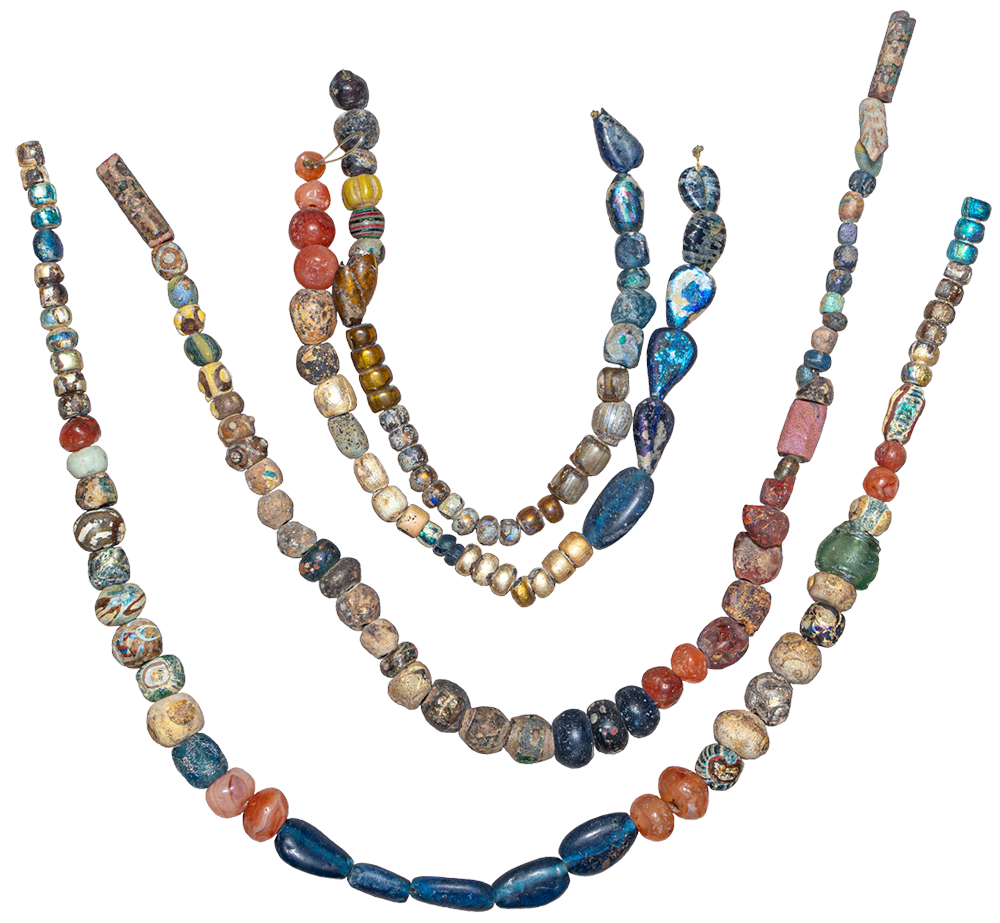The strings of beads. Chufut-Kale Burial Ground

Items from the early medieval burial ground of Chufut-Kale are being linked with the Goths: Germanic tribes that arrived on the territory of South-West Crimea in the III Century AD during Migrations Period of the Late Antique time. So far to this moment have been discovered and studied cut in the rock 135 family tombs-crypts of the second half of the VI or beginning of the IX Centuries AD. The beads found in the burial ground are colorful and diverse in shape and material. Findings of not only glass, but amber and carnelian beads as well indicate developed trade relations of the Crimean population with Byzantium, the East and the Danube region.
More information...It is known that the most ancient and developed centers of glass making and glass processing were located in Egypt and on the Levantine coast, where existed large workshops for production of beads. Bead necklaces were sometimes supplemented with metal pendants, usually found in the center of the necklace. The thread would go around the neck and the beads were located only in the front, because wearing of a cloak would leave visible only some part of the neck in the front. Sometimes the beads were placed between paired fibulae-clasps that held together funeral clothing.
Functional purpose: a detail of a woman's costume.
Notice of uniqueness: common finds for German women's burials.
